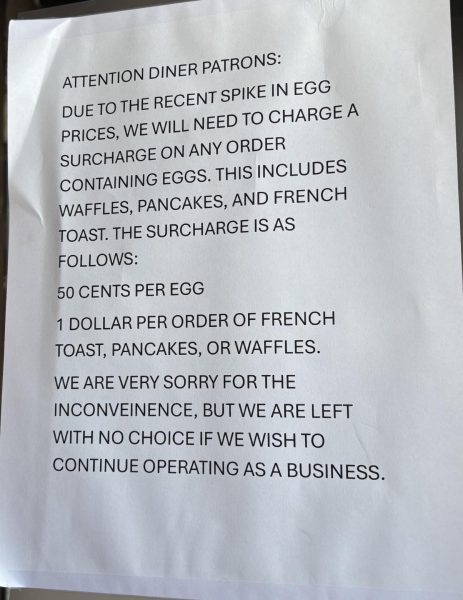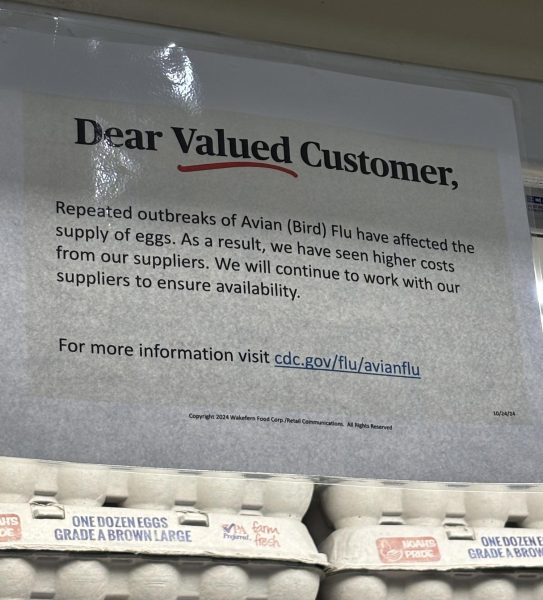Eggs are a staple in the diets of thousands of people around the world, but when prices skyrocket, they become nearly unaffordable. According to USAToday, in 2004, eggs cost about $1.20 a dozen; in 2014, eggs cost $2.21 a dozen, and in December of 2024, the price for a dozen eggs was $4.16. But in just about a month, the price rose around 80 cents, reaching the 2025 average of $4.95 per dozen eggs, according to SofiLearn. But why have these prices risen so dramatically? The rise in Avian Bird Flu is to blame.
Avian influenza, most commonly referred to as “bird flu,” is a type of influenza that is spread through birds and other animals. Originating in China decades ago, it has since posed a major threat to poultry populations. Infected chickens can die suddenly, and even if they survive, the virus can affect the quality of the eggs they lay.
For humans, consuming eggs from infected chickens can be dangerous, leading to symptoms such as fever, fatigue, pink eye, and nausea. In more severe cases, bird flu can cause “pneumonia, brain swelling, sepsis, and respiratory failure,” according to the Cleveland Clinic. The combination of inflation and concerns over bird flu has significantly driven up egg prices.
Supermarkets have been quick to acknowledge the issue. Signs posted in stores like ShopRite warn customers, stating: “Dear valued customer, repeated outbreaks of avian (bird) flu have affected the supply of eggs. As a result, we have seen higher costs from our suppliers. We will continue to work with our suppliers to ensure availability.” While these alerts inform shoppers of the situation, they haven’t changed the reality: egg shelves that were once nearly empty are now fully stocked—but largely untouched due to the high prices.
Not only have large department stores felt the price increase, but so have businesses within the FLOW community. At Oakland diner, a popular restaurant within the area, a sign is posted on the door that reads, “Attention patrons, due to the recent spike in egg prices, we will need to charge a surcharge on any order containing eggs. The surcharge is as follows: 50 cents per egg and one dollar per order of French toast, pancakes, or waffles.” For restaurants, these surcharges are a necessary response to rising costs. However, they also risk driving away customers, ultimately hurting revenue. If customers avoid egg-based dishes, businesses may lose an entire source of income.

The impact of bird flu extends beyond the economy—it’s also a public health concern. As outbreaks continue, more people are becoming ill, and the economic burden of rising food prices is adding to the strain on households and businesses alike. Moving forward, a key questio
n remains: Will researchers find a way to control or cure bird flu? And will egg prices ever return to normal? Or are we heading toward a future where bird flu and egg costs will only continue in the direction they’ve been going: up?
